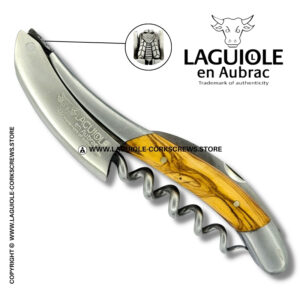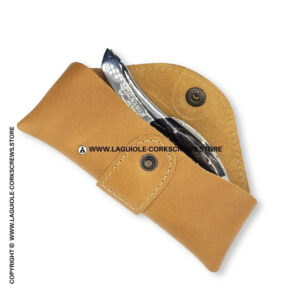French wine is not just about taste — it’s about tradition, rhythm, and ritual. From the vineyard rows of Bordeaux to the flick of a Laguiole en Aubrac corkscrew, every gesture matters. This article explores how centuries-old customs shape the way France opens, pours, and serves its wines — and what you can bring to your own table.
Wine as Culture, Not Just Beverage
In France, wine isn’t a drink — it’s a part of identity. It’s taught at the table, passed down in families, and woven into national pride. From rural winemakers to Michelin-star sommeliers, there is a shared reverence for the vine, the bottle, and the moment of service. This reverence gives birth to rituals — not rigid codes, but gestures that elevate wine from consumption to ceremony.
The French don’t just open a bottle. They prepare the space, select the tool, examine the cork, and pour with intention. These steps are not about performance — they are about presence. They remind us that wine is alive, and deserves to be welcomed, not just opened.
Vineyard Roots: Where the Ritual Begins
Wine rituals begin long before the cork is drawn. In the vineyard, traditions dictate when to prune, when to harvest, and how to treat the soil. In Burgundy, biodynamic calendars are still used. In Champagne, rules govern everything from planting density to harvest timing. The entire process is an orchestrated ritual — respecting nature, moon cycles, and ancestral techniques.
These gestures, repeated for generations, shape the final bottle. And when the wine arrives at the table, the ritual continues — this time in your hands.
The Table: Where Service Becomes a Gesture
In traditional French hospitality, serving wine is more than utility — it’s a form of respect. Sommeliers are trained not just in wine knowledge but in gestuelle — the controlled, beautiful flow of movement. From presenting the bottle to positioning the label, from cutting the foil to removing the cork without sound — each motion is deliberate.
This is why tools matter. The Laguiole en Aubrac corkscrew, with its balanced weight and quiet lever, was made for this kind of service. It doesn’t rush the moment. It supports it. The forged worm enters the cork with minimal resistance. The single-pivot lever avoids unnecessary motion. The finish — from olivewood to horn — reflects the natural elegance of the product it opens.
Moments That Define French Wine Culture
- The Apéritif: A casual pre-dinner moment, often outdoors, with a bottle of white or rosé and light conversation.
- The Sunday Lunch: A longer meal, with multiple wines — whites with seafood, reds with meat — each uncorked and served in rhythm with the courses.
- The Tasting Visit: In wine country, a bottle is opened by the winemaker, often with a Laguiole corkscrew, as part of the greeting ritual.
- The Celebration: Weddings, promotions, or births are often marked with a special vintage, opened with care, toasted with gravity.
In all these moments, the object that opens the wine is not neutral — it frames the experience. A mass-market tool breaks the mood. A handcrafted sommelier piece underlines it.

From Ritual to Object: The Corkscrew as Cultural Tool
The Laguiole en Aubrac corkscrew is a product of this ritual logic. It wasn’t designed in a lab — it was born from centuries of French service tradition. Originally evolving from the folding knives used by shepherds in the Aubrac region, the sommelier corkscrew was refined over time to meet the needs of the wine world.
Each Laguiole en Aubrac corkscrew is made by a single artisan, from start to finish, in the south of France. The balance, materials, and mechanism are studied not just for efficiency — but to preserve the silence, fluidity, and emotion of the uncorking moment. Discover the brand’s philosophy.
Why These Rituals Still Matter
In a world of speed and automation, the act of opening wine manually — with attention, intention, and care — becomes more valuable. It signals respect: for the wine, for the person serving, for the guest receiving. Rituals give rhythm. They slow things down. They help us reconnect with what’s in front of us.
This is why sommeliers still carry a corkscrew on their hip — not an electric gadget. This is why collectors gift engraved Laguiole corkscrews to celebrate milestones. It’s not about nostalgia. It’s about anchoring the moment in meaning.
The Modern Ritual: What You Can Reproduce at Home
You don’t need a château or a cellar to honor the wine ritual. Here’s what you can do:
- Set the mood: Clear a clean surface, prepare glasses, avoid distractions.
- Present the bottle: Show the label, name the wine, acknowledge the vintage.
- Cut the foil cleanly: Use the foil cutter of your corkscrew to slice below the lip.
- Insert the worm vertically: Aim for center, stop before reaching the bottom.
- Extract slowly: One steady motion, no noise, no twist.
- Wipe the neck: A simple cloth, a clean gesture.
- Pour deliberately: A third of the glass first. Let the wine breathe.
Each of these steps turns an ordinary bottle into an experience.
The Corkscrew as the Key to Ritual
If wine is a ritual, the corkscrew is its instrument. Choosing the right one makes all the difference. A Laguiole en Aubrac corkscrew — handcrafted, balanced, signed — is more than a tool. It’s a companion to the moment. Whether you use it weekly or for special occasions, it becomes part of your wine story.







